Juniperus virginiana
Eastern Red Cedar
The typical conical form of Eastern Red Cedar is attractive in the landscape, but as a tree matures its shape becomes more irregular. Foliage color can vary from gray-green to dark green or even light green, then takes on a reddish tint with winter cold. Blue berries appear on female plants. Accepts a wide range of soils. Canopy coverage: 707 square feet.
[Read More]Juniperus virginiana cupressifolia
Hillspire Juniper
Grows in a symmetrical tree with a pyramidal form. Extremely cold hardy. Blue berries appear on female plants. Accepts a wide range of soils. Sometimes sold under the name 'Hillspire'. Canopy coverage: 177 square feet.
[Read More]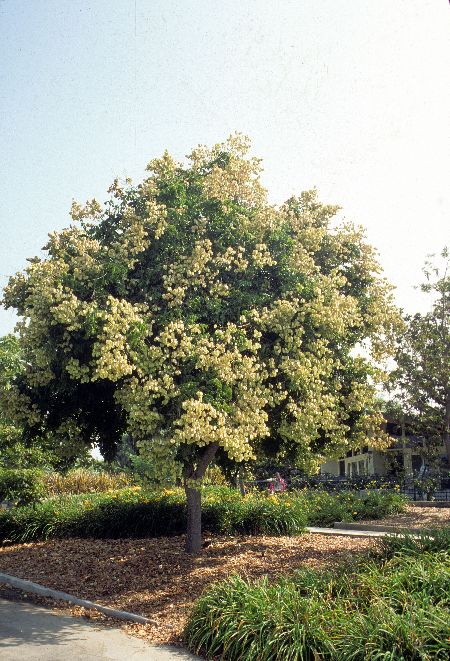
Koelreuteria paniculata
Goldenrain Tree
The open, branching form of Goldenrain Tree produces light shade. Papery fruit capsules emerge red then turn brown. Best with some protection from the sun in hot summer regions. Canopy coverage: 962 square feet.
[Read More]Lagerstroemia indica
Crape Myrtle
Crape Myrtle can be successfully grown as a tree or shrub. It offers interest all year—flowers summer into to fall, fall color, and interesting sculptural branches during winter after leaves fall. Canopy coverage: 314 square feet.
[Read More]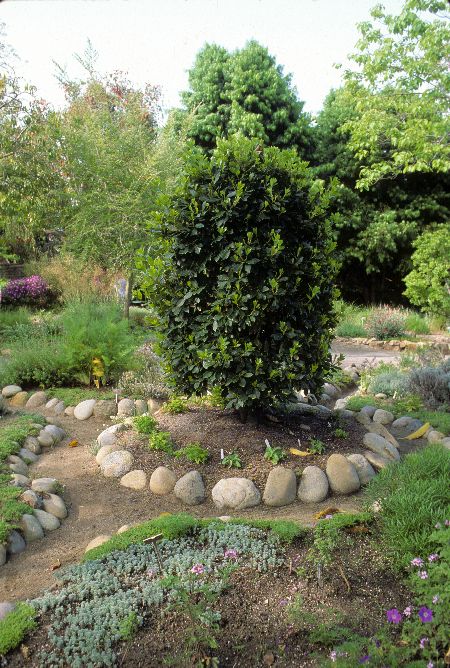
Laurus nobilis
Bay Laurel, Sweet Bay
The leaf of this plant is the classic bay leaf used in cooking. It can be grown as a tree or shrub. Adapts well to container culture, helpful when below-freezing temperatures are forecast. Simply move plants to a protected location. Canopy coverage: 707 square feet.
[Read More]Leptospermum scoparium
Tea Tree
This Australian native can be grown as a shrub or tree. Plant in soil that has good drainage. Needlelike leaves are aromatic and accept pruning and shaping. Flowers are profuse and bloom in bright colors of pink, red, burgundy and white. Many selections of this species are available, including dwarf and compact plants—check locally. Canopy coverage: 79 square feet.
[Read More]
Lysiloma watsonii var. thornberi
Feather Tree
Delicate ferny foliage is an attraction, along with a profuse spring and summer show of white to cream puffball flowers. Grow as a small tree or shrub. If damaged by frost it typically regrows rapidly into a shrubby form. Canopy coverage: 177 square feet.
[Read More]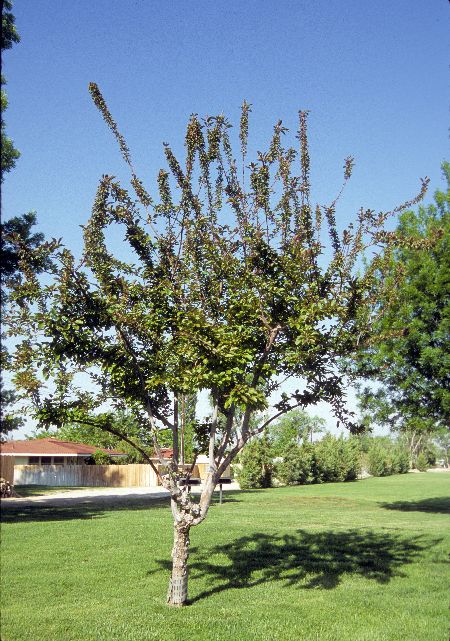
Malus x 'Prairifire'
Prairifire Crabapple
Crabapple 'Prairifire' becomes a small, round-headed tree. The small, red crabapple fruit in fall are loved by birds. Canopy coverage: 314 square feet.
[Read More]Malus 'Indian Magic'
Flowering Crabapple
Hundreds of crabapple varieties are available to choose from. 'Indian Magic' is shown here. Look for those known to do well locally and are disease resistant. Canopy coverage: 177 square feet.
[Read More]Melaleuca linariifolia
Flaxleaf Paperbark
Flaxleaf Paperbark begins as a willowy juvenile (young) tree that may require staking. With time it takes on a sturdy, umbrellalike form. Most obvious feature is the interesting white bark on the trunk that peels in flakes. Small, delicate white flowers cover the tree in summer. Canopy coverage: 314 square feet.
[Read More]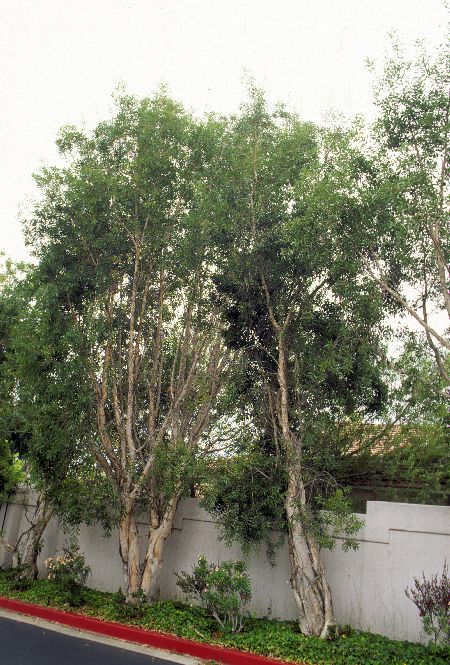
Melaleuca quinquenervia
Cajeput Tree
One of primary attractions of this Australian native is its deeply fissured, spongy bark along the trunk and major branches. Makes a slender, strongly vertical evergreen tree. Requires more moisture in hot inland and desert regions. Canopy coverage: 177 square feet.
[Read More]Myrica californica
Pacific Wax Myrtle
The new genus name for Pacific Wax Myrtle is Morella, but it is still commonly sold as Myrica. Grown as a tree or shrub with graceful upright limbs. Accepts full sun along the coast; provide with afternoon shade and additional summer water in hot inland regions. Leaves to 4 inches long are fragrant. Berries that are loved by birds follow the inconspicuous spring flowers. Canopy coverage: 314 square feet.
[Read More]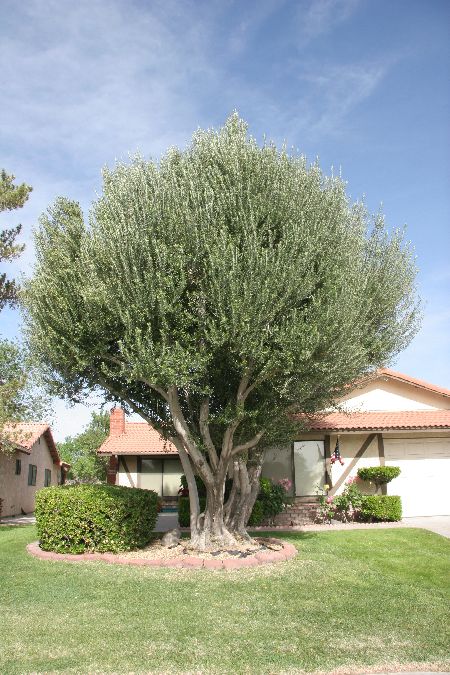
Olea europaea
Fruitless Olive
The pollen produced by Olive can cause severe allergies in some people, to the extent that purchasing Olive trees is banned in certain regions. However, pollenless selections are available. 'Swan Hill' is one of these popular selections. Also see 'Little Ollie' in Shrubs. Canopy coverage: 707 square feet.
[Read More]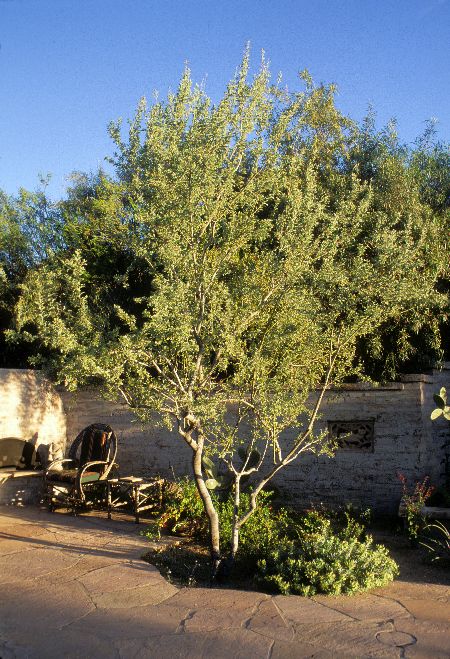
Olneya tesota
Ironwood
Ironwood is an iconic tree of the desert that gives character to the landscape. It is a quality tree that takes it time to mature but worth the wait. Branches have thorns. Flowers are small and pealike, blooming in masses. Canopy coverage: 707 square feet.
[Read More]Parkinsonia 'Desert Museum'
Hybrid Palo Verde
This Palo Verde is a thornless horticultural selection with an attractive vase shape. A popular choice. Avoid overwatering especially in summer; don't plant in lawns. Can suffer from limb breakage in high winds. Canopy coverage: 491 square feet.
[Read More]Parkinsonia florida
Blue Palo Verde
The rich yellow flowers of Blue Palo Verde become a giant bouquet of color in spring. This is an attractive tree with a vase-shaped form. Canopy coverage: 707 square feet.
[Read More]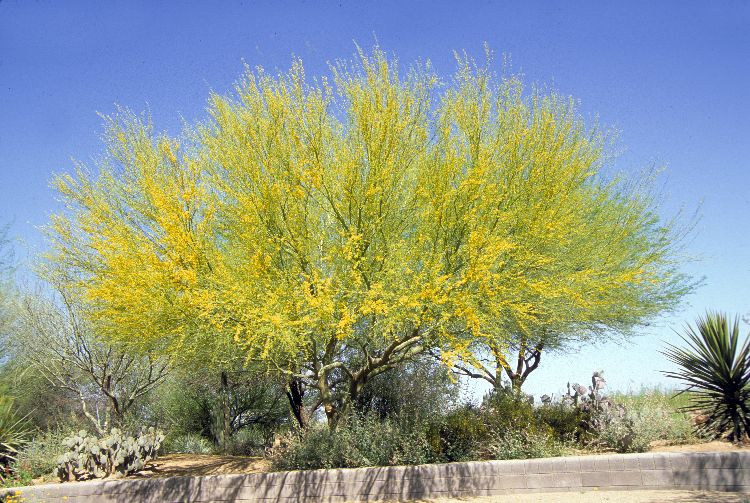
Parkinsonia microphylla
Foothills Palo Verde
Foothills Palo Verde is naturally more shrublike in form but it can be pruned to become a small tree with character. Canopy coverage: 177 square feet.
[Read More]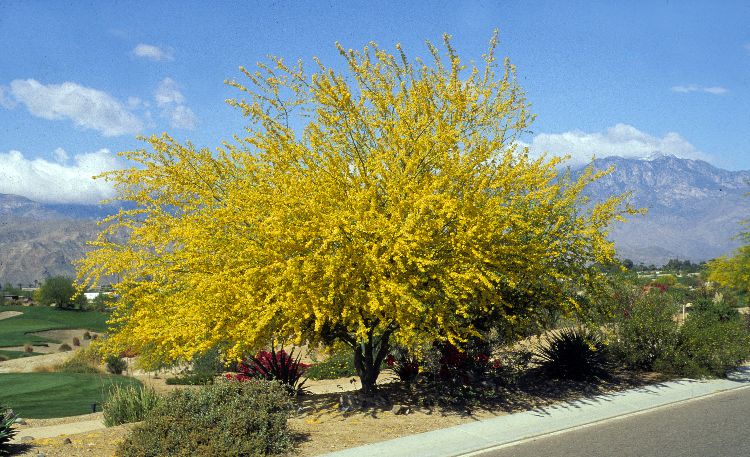
Parkinsonia praecox
Palo Brea
The curving branches of Palo Brea form an interesting structural pattern accentuated by its distinctive, lime green bark. Not quite as cold hardy as most other Palo Verdes. Canopy coverage: 491 square feet.
[Read More]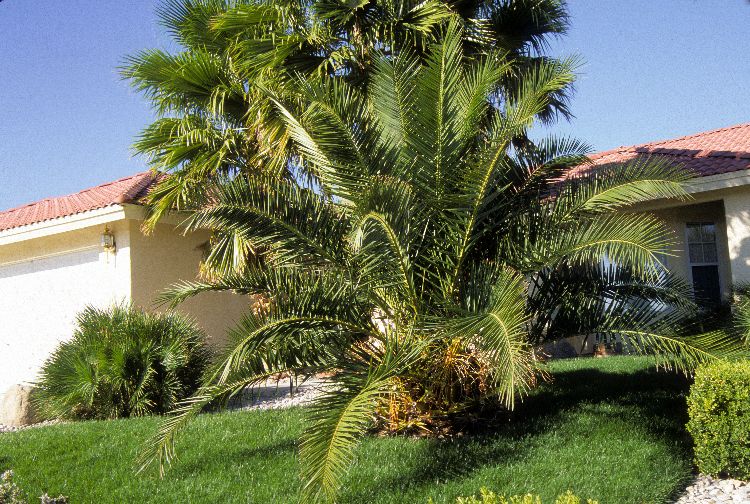
Phoenix canariensis
Canary Island Date Palm
This is a featherleaf palm with fronds reaching up to 20 feet long. Provide plants with plenty of room to grow. Fruit can be messy but are loved by birds. Canopy coverage: 707 square feet.
[Read More]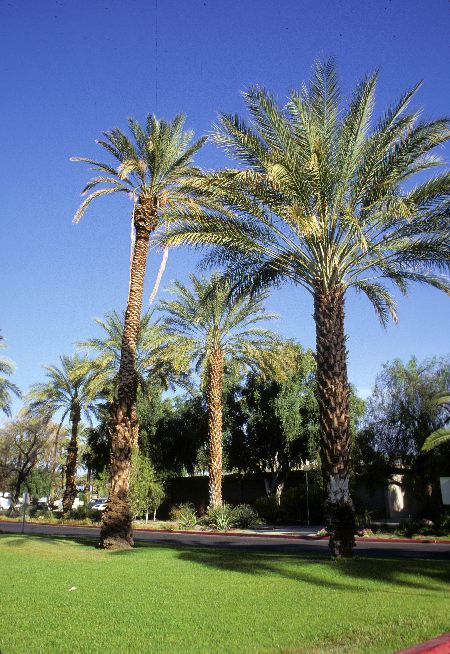
Phoenix dactylifera
Date Palm
This is the date-producing palm, grown for both its fruit and ornamental value. Tall growing, so consider it a skyline tree that needs room above. Do not plant beneath high wires. This featherleaf palm has fronds that reach up to 20 feet long so give it room to grow. Fruit can be messy but are loved by birds. Canopy coverage: 491 square feet.
[Read More]Phoenix roebelenii
Pygmy Date Palm
Pygmy Date Palm is small and refined, evoking a subtropical mood. Used often in containers or with three or more plants in a group to create a focal point. Long curving fronds grow to 8 feet long. Provide afternoon shade in hot summer regions. Will survive temperatures to 26F, but suffers damage to fronds. It also can be grown indoors with bright light. Canopy coverage: 50 square feet.
[Read More]